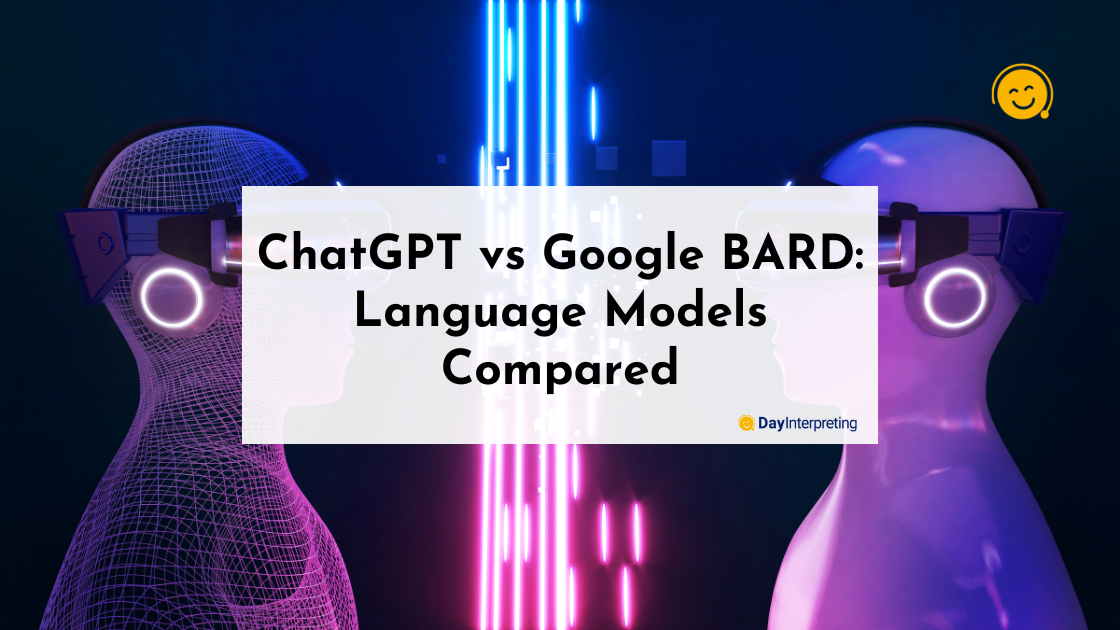Google has been spearheading the department of AI development for years. But with other tech giants like Facebook (or rather Meta), Intel, Amazon and Apple all entering the arena, things got a little heated. That was until OpenAI emerged out of nowhere and left the world breatless. A quick Google search will solidify that. Suddenly, we’re in the middle of an epic showdown between ChatGPT vs Google BARD!
With a record-setting array of AI chatbot functionalities, ChatGPT made more than just a booming debut. Praised globally for its astounding abilities, it arguably rattled the dominating foundations of Google.
Having tested the capabilities of both ChatGPT4 and Google BARD, we’re ready to deliver our unbiased opinion of how these two giants square up against each other. Strap in, and let’s get to the grit of things, shall we?
ChatGPT vs Google Bard: The Inner Workings
It’s important to note that one of the biggest differences between ChatGPT and Google BARD comes down to the Large Language Model (LLM) used by each technology. OpenAI relies on Generative Pre-Trained Transformer 4 (GPT-4) and BARD has its own unique AI Language Model for Dialogue Applications (LaMDA). Although each language model has been scrutinized for their weaknesses, AI keeps evolving and improving on those errors.
While GPT-3 and GPT-4 come from the training models sourced from websites, documents, articles, and books, BARD’s LaMDA’s had enriched training supported by Infiniset, a dialogue-and-conversation-focused dataset fed on web-based conversations, online documents, and sources like Wikipedia and Common Crawl.
ChatGPT only has access to info up until 2021, so it isn’t quite as clued up on any recent events or research. BARD, on the other hand, scours the internet and search engine data in real-time, giving users the most up-to-date answers to their common questions.
Suffice it to say both Large Language Models are still works in progress, and it’s only through their advancement that we’ll truly be able to see where AI language models and generative AI end up in the near future.
Measuring Up the Two Giants of AI Tools: A Head-to-Head Comparison
To help you better understand which one of the two AI solutions reign supreme, we explored and compared some common functionalities. Here’s how each fared in the dual between ChatGPT vs Google BARD…
Information Synthesis Provided by an AI Chatbot
When asked to explain APIs to a non-coder, BARD was the clear winner. Google BARD’s explanation of APIs to a non-coder through the example of a weather forecast application using the OpenWeatherMap API gives a much more detailed understanding of how APIs are used in software development.
Since BARD uses real-world examples and uses natural language processing in its explanations, including social media app integration and online inventory management, it helps the reader grasp the practical applications and significance of APIs across different industries. Overall, Google BARD’s response offers a more comprehensive explanation that effectively communicates the concept of APIs to a non-coder compared to the capabilities of ChatGPT.
Accuracy
When you ask both Google BARD and ChatGPT a common question related to best business practices, they cover the same foundational elements such as finances, ethics, marketing, payment considerations, international marketing, and other basic business fundamentals. But there are differences in how each AI tool presents its findings.
ChatGPT tends to deep-dive into topics and loves offering detailed explanations for each topic worth discussing. It also pre-identifies issues that might arise with each topic it discusses.
Google BARD tends to offer more generalized and concise responses. Yes, it still covers all major aspects of the question at hand, but it doesn’t take the initiative to self-explore topics that might be relevant in relation to the question the user posed.
In this department, ChatGPT emerges as the winner.
Coding
When it comes to assisting users with generating code, ChatGPT offers a more comprehensive and complete coding solution. When asked to help write code for a solitaire game app, ChatGPT provides HTML and CSS code that showcases the layout of the card deck along with starting positions for each deck of cards. It also indicates CSS classes for card suites, which assists users with building proper foundations for their app.
While Google BARD presents the basics in terms of HTML and CSS to establish the correct layout for an app, it doesn’t give the user any critical details they’d need to create a fully functional game app.
Answering Approaches
Google BARD focuses on first understanding the question posed by the user and then deciphering any contextual nuances tied to the questions. In short, it tries to mimic human speech. This is possible due to hierarchal clusters of information in the LaMDA training that carefully guide the AI tool’s responses. Although Google BARD tries to give the most genuine responses in relation to actual human responses, in the battle between ChatGPT vs Google BARD, there’s still lots of room for improvement.
GPT-4, on the other hand, tends to produce more natural-language-based responses. This can be attributed to its training in AI content generation and web text, all based on statistical data.
Final Verdict on the Matter of ChatGPT vs Google BARD
At the moment, ChatGPT has the upper hand in this epic faceoff. Although both AI tools can do with some upgrades and improvements, OpenAI’s technology outperforms Google at the moment. ChatGPT might be stuck in 2021. However, it’s a much more human-like solution for generating content that can be understood by its users.
Google BARD might be trained on human dialogue and uses search data to provide real-time information, it’s currently unable to stand up to the likes of GPT-4.
At the end of the day, both language models provide impressive linguistic capabilities, but nothing we’re used to from professional interpreters and translators.





0 Comments